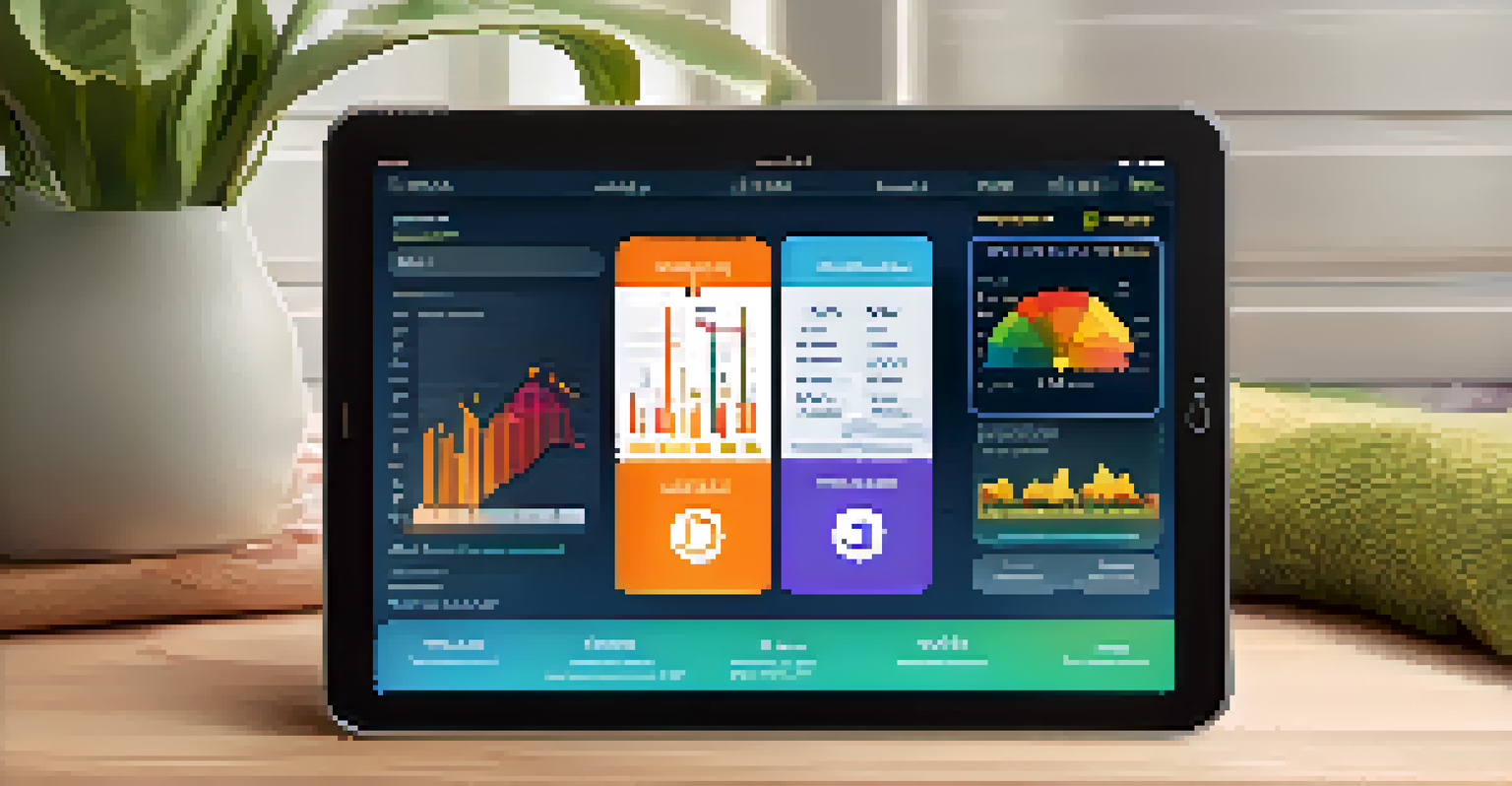The Importance of Communication in Pain Management

Understanding the Pain Experience Through Dialogue
Pain is a deeply personal experience, and understanding it requires open dialogue between patients and healthcare providers. When patients communicate their pain, they provide vital information that can shape treatment plans. This two-way communication allows for a more tailored approach to pain management, addressing not just the physical aspects but also emotional and psychological factors.
The greatest medicine of all is to teach people how not to need it.
For instance, a patient might describe not just the intensity of their pain but also how it affects their daily life. This insight helps providers to see the bigger picture and consider interventions that go beyond medication. By fostering a space where patients feel comfortable sharing their experiences, healthcare professionals can develop a more comprehensive pain management strategy.
Moreover, effective communication can reduce anxiety and increase trust between patients and their caregivers. When patients feel heard, they are more likely to adhere to treatment plans and actively participate in their care, leading to better outcomes overall.
Building Trust: The Foundation of Effective Communication
Trust is crucial in any relationship, especially in healthcare. When patients trust their providers, they are more likely to share critical information about their pain. This open exchange can significantly enhance the effectiveness of pain management strategies.

For example, a patient who feels secure with their doctor may be more forthcoming about side effects or concerns regarding their treatment. This honesty allows healthcare providers to make necessary adjustments, ensuring that the chosen pain management approach aligns with the patient's needs and preferences.
Open Dialogue Enhances Pain Management
Effective communication between patients and healthcare providers leads to more personalized and effective pain management strategies.
Moreover, trust cultivates a collaborative environment where patients and providers work together toward common goals. This partnership not only empowers patients but also encourages them to take an active role in their pain management journey.
The Role of Active Listening in Patient Care
Active listening is a powerful tool in healthcare communication. It involves fully concentrating, understanding, and responding thoughtfully to what the patient is saying. This practice ensures that patients feel valued and respected, encouraging them to share more about their pain experiences.
Communication leads to community, that is, to understanding, intimacy and mutual valuing.
When providers engage in active listening, they can pick up on subtle cues that might otherwise be overlooked. For instance, a patient may express frustration not just about their pain but also about the limitations it places on their lifestyle. Recognizing these nuances allows for a more compassionate and effective response to their needs.
Additionally, active listening can help to clarify misunderstandings that may arise during consultations. By confirming what a patient has communicated, healthcare providers can address concerns promptly, enhancing the overall quality of care.
Empowering Patients Through Education and Communication
Education is a vital component of effective communication in pain management. When patients understand their conditions and treatment options, they are better equipped to participate in their care actively. This empowerment can lead to improved pain management outcomes.
For instance, when patients are educated about the potential side effects of medications, they can report these issues promptly. This proactive approach enables providers to make timely adjustments to the treatment plan, improving patient satisfaction and results.
Trust Builds Effective Patient Care
Establishing trust allows patients to share vital information, enhancing their involvement in pain management and improving outcomes.
Moreover, educating patients fosters a sense of ownership over their health. When patients feel informed and involved, they are more likely to adhere to treatment recommendations and adopt lifestyle changes that can alleviate their pain.
Addressing Emotional and Psychological Aspects of Pain
Pain is not only a physical sensation but also an emotional experience. Effective communication allows healthcare providers to address the emotional and psychological aspects of pain, which can be just as debilitating. Understanding this connection can lead to more holistic pain management strategies.
For example, a patient experiencing chronic pain may also struggle with anxiety or depression. By discussing these emotional challenges, providers can recommend therapies that address both the physical and mental health aspects. This integrated approach can significantly enhance a patient's quality of life.
Furthermore, acknowledging emotional pain fosters a supportive environment where patients feel validated. When providers recognize the emotional toll of pain, it strengthens the therapeutic alliance and encourages patients to share their concerns openly.
Utilizing Technology to Enhance Communication
In today's digital age, technology plays a significant role in enhancing communication between patients and healthcare providers. Telehealth services, patient portals, and mobile health apps facilitate ongoing dialogue, making it easier for patients to report symptoms and concerns from the comfort of their homes.
For instance, a patient can use a mobile app to log their pain levels, triggers, and any side effects they experience. This real-time data can be shared with their healthcare team, allowing for timely adjustments in treatment. Such tools not only streamline communication but also empower patients to take an active role in managing their pain.
Technology Facilitates Better Communication
Utilizing telehealth and mobile apps enhances communication, empowering patients to actively manage their pain from home.
Moreover, technology can help bridge gaps in care, especially for patients in rural or underserved areas. By providing access to specialists and resources, telehealth ensures that patients receive the necessary support, no matter where they are located.
The Impact of Communication on Pain Management Outcomes
Effective communication directly influences pain management outcomes. Studies have shown that patients who communicate openly with their healthcare providers report higher satisfaction levels and better pain control. This correlation highlights the importance of fostering a communicative environment.
When patients feel comfortable discussing their pain, they are more likely to receive appropriate treatments tailored to their unique needs. This can result in faster recovery times and a better overall experience, reinforcing the value of communication in the healthcare setting.

Additionally, positive communication can lead to improved adherence to treatment plans. When patients understand their roles and responsibilities in managing their pain, they become more invested in their health journey, ultimately leading to more successful outcomes.